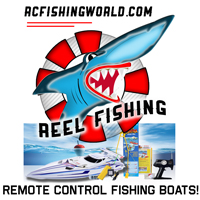How to Find the Perfect Rod and Rell Combination
Over the several years that I’ve been fishing, I have had a lot of questions from my friends about the best rod and reel to buy. Apparently, I’m not alone in this, because ever since I started browsing the Internet, I’ve read countless emails and messages from people in blogs, forums and the like, all wanting to know which is the best rod and reel out there.
Now, I’m not going to lie to you. I truly believe that there is a perfect rod and reel out there for you. In fact, there are several perfect rods and reels out there, but you’d have to determine which one will suit you, depending on your personal preferences. Price is not going to be the determining factor here. Are you getting my drift now? Here are several ideas to help you decide the perfect rod and reel for you.
Decide on what fish do you want to catch. Particularly the size, since this is an important factor when you start choosing your tackle. It’s like trying to kill a fly with an axe. The size of your prey will determine the relative size of your equipment.
Next, think about where you would be going to fish. And I’m not talking merely about saltwater and freshwater fishing. You need to think about more specific issues, like the available space for casting, the amount of skill you have in making long casts, and even whether you’re going fishing on a pier, on a lake, or off a boat in the ocean. The answers you’ll get will also play a definite role in deciding what to buy.
Now, here are the different tackle choices available, broken down into basic categories.
Ultralight Spinning – This is ideal for small-sized fishing in confined areas. Lines from two to six pound test will give you a challenge, depending on your skill. If you land a fish with this tackle, you’ll have something to brag about.
Light and Medium Spinning – The staples in the spinning group. The sizes of the lines can go from six pound test to seventeen pounds. Most inshore saltwater fish can be caught with this tackle, and it’s recommended for use in an inshore boat, off a pier, or even on the shore itself, but not in the surf.
Heavy Spinning – The big boy you need for offshore trolling. These are also used in combination with surf rods when you want to go surf fishing. The line sizes here are twenty pound test and above. The largest sizes you can effectively use for a spinning tackle will be around thirty pound test.
Bait Casting – The conventional reels used mainly for inshore fishing. Used for casting artificial lures and plugs, and the line sizes range from twelve to twenty pound test. It’s not recommended using lines lighter than twelve pound test with this one.
Bottom Fishing – The mainstay of most head boats. Rods can go around six or seven feet long, with a conventional reel. Line sizes can go from thirty to eighty pound test. This outfit is really tough and rugged, and can easily haul big fish off the bottom.
Trolling – This is quite similar to bottom fishing tackle, but very much specialized. I would suggest getting a professional to help you with buying one, since you seriously need to consider price and size here. Prices can go around $1,000 for each.
An expensive tackle offers absolutely no guarantee that it is the best for you. A lot of seasoned fishermen have tackles that cost up to $400 each, as well as some that just cost around $50, and they swear that the cheaper ones perform just as well as the high-priced ones.
To read about cellulite diet and eliminating cellulite, visit the Cellulite Surgery site.
Tags: blogs, Combination, determining factor, drift, Fishing, Perfect, Personal Preferences


